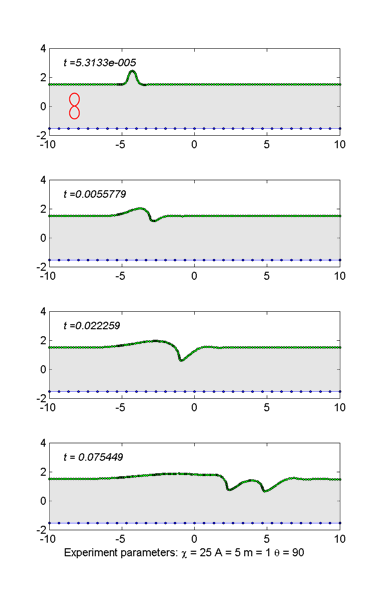 |
ELECTROMIGRATION INDUCED HILLOCK DYNAMICS ON THE INTERCONNECT SURFACE Two Fold Crystal Symmetry, {110} Planes in FCC The 90° tilting shows almost identical evolution morphologies regardless the intensity of the electron wind, only one modification, which occurs very high winds. The edge-Hillock transforms into edge-void shape, which migrates towards the cathode end. At moderate intensities a second edge-void may form behind the first one, creating doublet. For very high electron winds, the Hillock again transforms into an edge-void, which becomes intruded to the lee side, and finally breaking up from the neck region and generating a tiny inner void. It seems this process may repeat itself many times, since the leeward side of the edge void drifts much faster than the windward side; the both regions combine together at the top by trapping an empty space, which is nothing but a formation of an inner void. These newly formed inner voids migrate towards to cathode end. Strangely, this tiny void doesn’t follow a straight path but rather takes a route which closely traces the contour line of the edge-void. This is due to the strong current crowding taking place between the inner void and the edge-void because of the extremely high electron current densities plus the very close proximities between these two defects. |